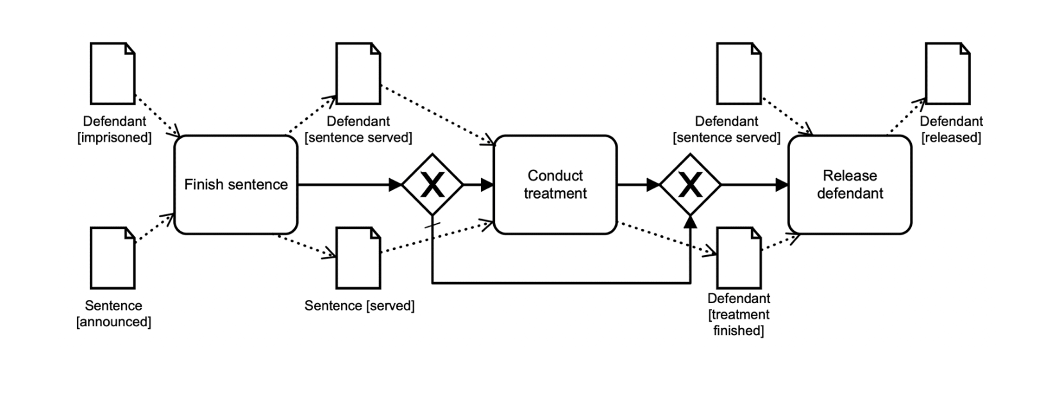-
Notifications
You must be signed in to change notification settings - Fork 5
Example Use Case Criminal Justice
In the following, the process of criminal justice is described in more detail and modeled using fragment-based Case Management. It is used to further explain and illustrate certain guidelines.
We decided to go with this use case because the process relies on domain experts' decisions and knowledge. Furthermore, it is highly flexible since there exist several options how the goal can be achieved. Nevertheless, the process is semi-structured because various activities are always executed in a predefined order. Having different knowledge objects such as the sentence and the defendant file, the process can be indicated as data-driven. Depending on different data object states, different process parts are enabled.
When a person is charged, a criminal justice process takes place in court, ending with a verdict that either says the defendant will be released or sentenced to prison. This simplified criminal justice process is based on the work of van Hee et al. and has been extended by us. The overall process goal is to free or release the defendant. In case of release the sentence has to be served.
The process begins with the registration of the defendant. Afterwards, the court session is held. Depending on the case, up to four lay assessors are part of the court session. Each of them forms a personal judgement. Together with the personal judgement of the judge, a sentence is announced based on a voting that either frees the defendant or sentences them to prison. In case of the latter, further treatment, such as medical treatment, may be determined and included in the sentence. If the defendant is declared innocent, they are released from pretrial detention. If a sentence of imprisonment is appealed, a new session of the court is scheduled and a new sentence is announced. A defendant sentenced to prison is sent to prison to serve the sentence. On the basis of good behavior, a request may be made to reduce the sentence. The corresponding request can either be rejected or accepted. If the sentence reduction is accepted, the sentence is adjusted. After the sentence is served, treatment is provided if necessary (based on the sentence). Finally, the inmate is released.





[Van Hee et al., 2007] Van Hee, K., Serebrenik, A., Sidorova, N., Voorhoeve, M., & Van Der Werf, J. M. (2007, September). Modelling with history-dependent petri nets. In International Conference on Business Process Management (pp. 320-327). Springer, Berlin, Heidelberg.
[bpb, 2018] Bundeszentral für politische Bildung (2018, April). Schöffen als Richter: Im Namen des Volkes. Retrieved from https://www.bpb.de/politik/hintergrund-aktuell/267620/schoeffen-als-richter-im-namen-des-volkes on 2022-01-10